|
|
Alessandro Melis. Italian restricted competition practice. Three illustrative case studies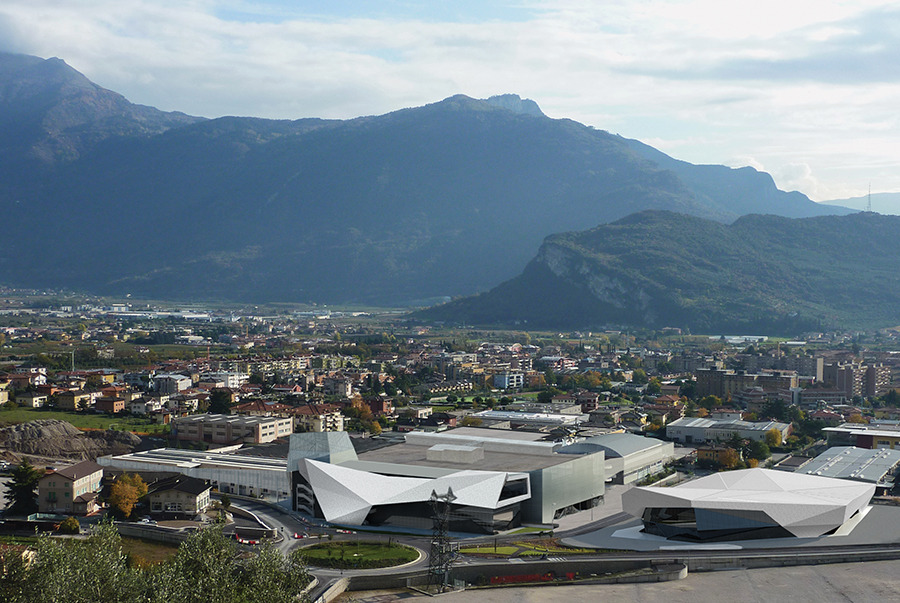
PALASPORT, RIVA DEL GARDA, TRENTO. TYPE: Public, Sport Hall. CLIENT: Patrimonio del Trenitino S.p.a. LOCATION: Baltera, Riva del Garda (TN). SERVICES: Concept, developed, executive design, safety coordination, worksite management. YEARS: 2014-ongoing. COSTS: 10.182.376,02 €. Photo: heliopolis21.it
Italian restricted competition practiceThree illustrative case studiesAlessandro Melis
Alessandro Melis of Heliopolis 21, Italy
Background
Almost all Italian public works are covered by competitions regulated under a law, the Codice Appalti, which is derived from the EU public contracts directive.1 However, the Italian interpretation of the EU legislation, according to my experience, appears more restrictive than in other countries.
____________
1 The Codice Appalti (The Code Of Public Works Contracts, Supplies and Services) April 18, 2016 (https://www.codiceappalti.it/) transposes Directive 2014/24/EU (www.eur-lex.europa.eu/legal-content/EN/ALL/?uri=CELEX:32014L0024)
Public projects are primarily assigned through six different procedures: Open competition (procedura aperta), restricted competition (procedura ristretta), architecture bid (affidamento di incarico), general contractor bid (appalto integrate), project financing, and professional list (elenco professionisti).2 The most common are the open competition, and the architecture bids (affidamento di incarico) but these are extremely bureaucratic more so, I think, than even the UK.
____________
2 – Procedura Aperta/Open Procedure – Directive 2014/24/EU. Art. 27
– Procedura Ristretta/Restricted Procedure – Directive 2014/24/EU. Art.28
– Affidamento di Incarico/by a pre-qualification questionnaire. Directive 2014/24/EU. Annex V Part C. trans. entrustment of appointment.
– Elenco pofessionisti/Lista professionalista/may be considered as similar to an approved list or framework but applies only below EU thresholds.
– General Contractor bid – a bid where the services of the architect are sub-contracted to a general contractor under a contract notice for works
– Project Financing – a public – private partnership, or design, build & finance construct
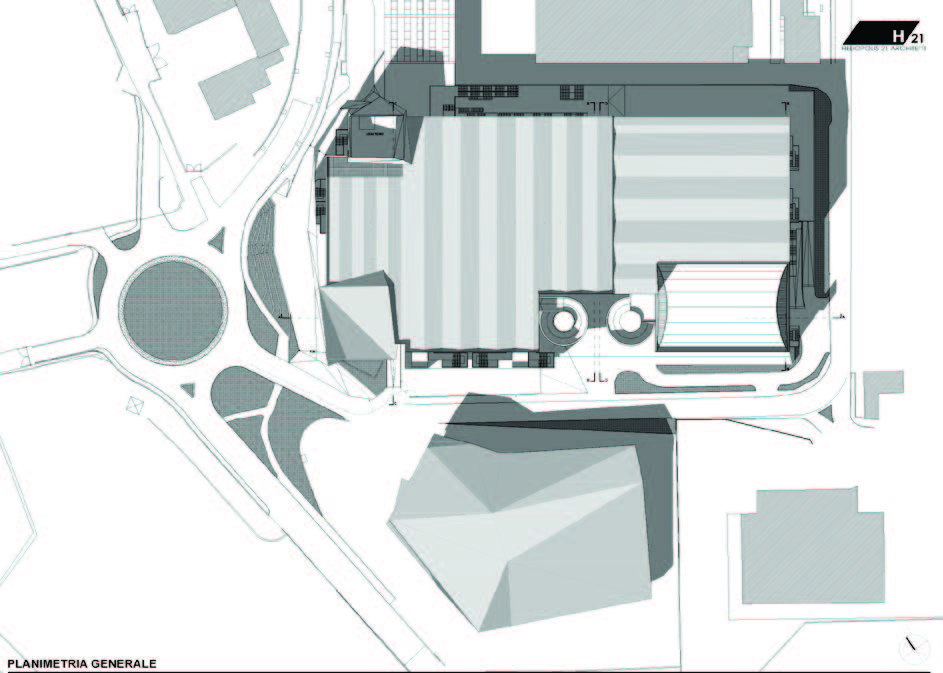
figure 5.1
Riva Del Garda masterplan by Heliopolis 21 with Coop Himmelblau
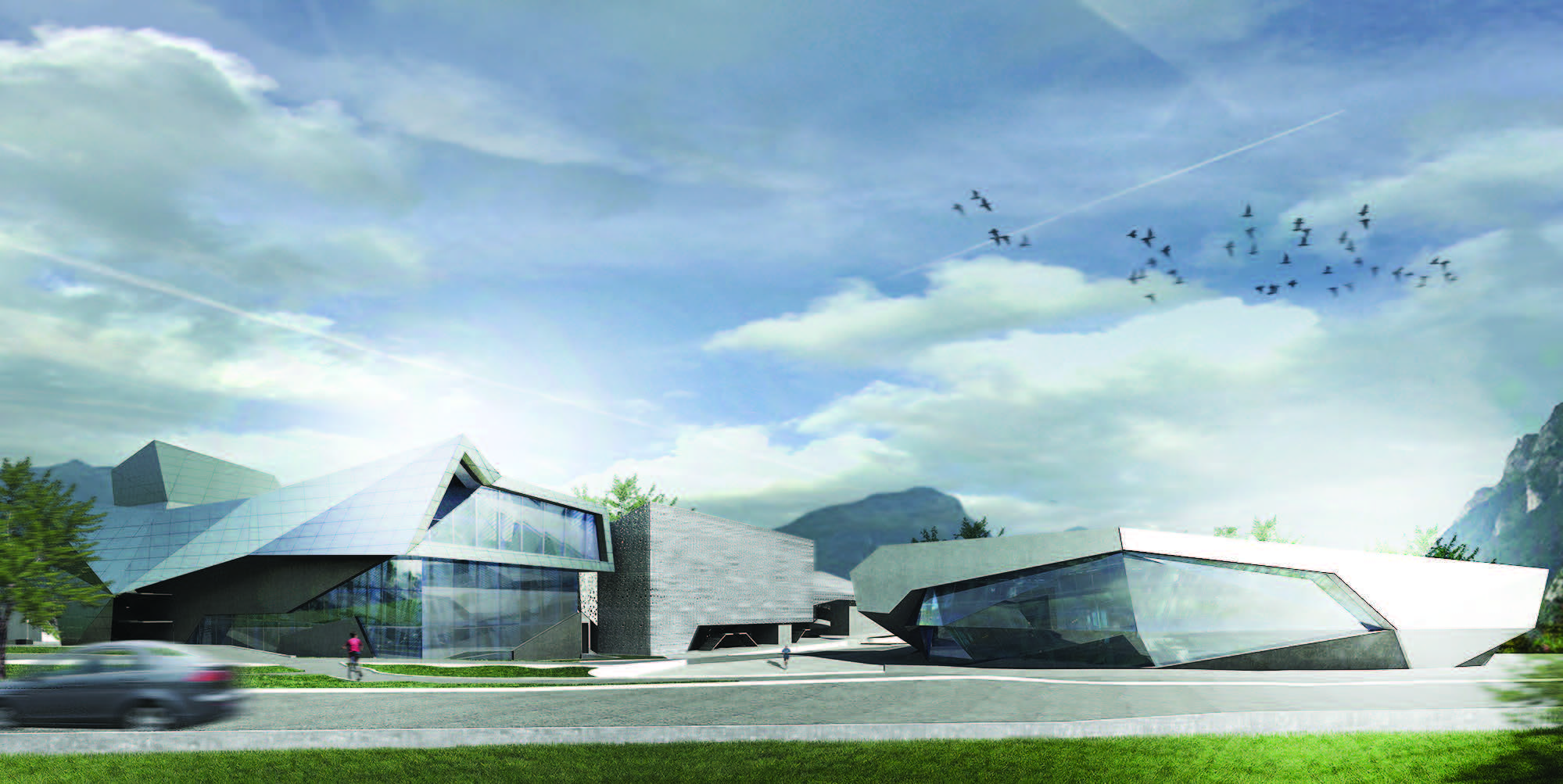
figure 5.2
Riva Del Garda exhibition fair & sports hall rendering by Heliopolis 21 with Coop Himmelblau
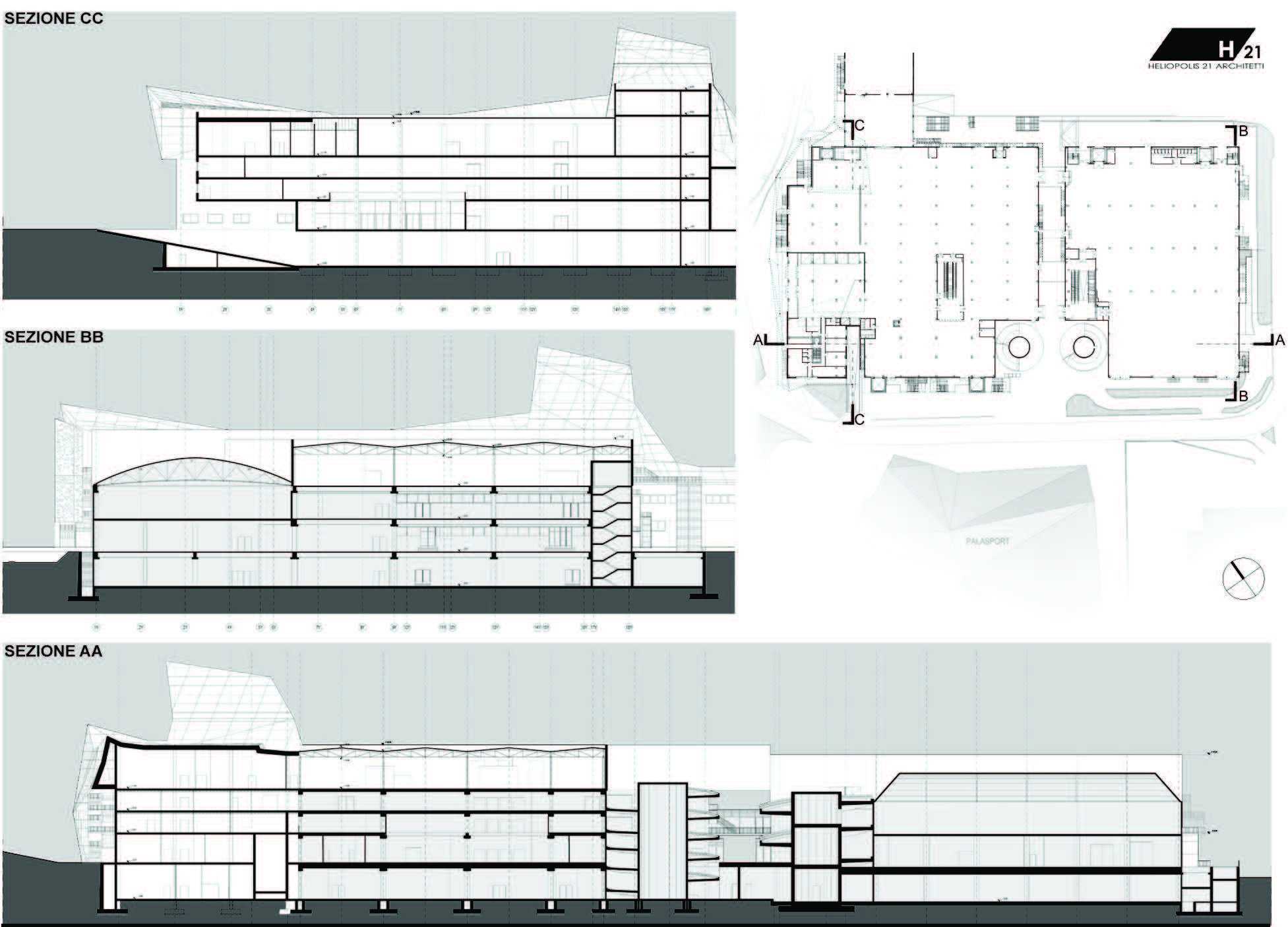
figure 5.3
Riva Del Garda exhibition fair, sections & key plan 2017 by Heliopolis 21 with Coop Himmelblau
While the European legislation aims to improve access, in Italy the procedures are basically managed, like an obstacle course, through administrative compliance, which counts more than contents. It is common for example to be excluded for incorrectly placing a signature, or for a typo, regardless of the need for anonymity. However for Italian architectural practices investing in building-up successful bidding expertise remains their best available strategy for developing relations with large construction and engineering companies, and hence accessing work.
Open competitions are also far more challenging in Italy than elsewhere, for two fundamental reasons. Italy has the highest percentage of architects per capita in the world,3 and it has experienced a prolonged economic crisis. This has meant that the numbers trying to participate in competitions overwhelms the system and turns it into a lottery.
____________
3 Mirza & Nacey Research. The Architectural Profession in Europe 2016. A Sector Study. Brussels: Architects' Council of Europe. Conseil des Architects D'Europe; 2016. Table 1-1, p. 1-10. www.ace-cae.eu/fileadmin/New_Upload/7._Publications/Sector_Study/2016/2016_EN_FN_070217_new.pdf (accessed 22/04/2018) – Estimated number of architects: Italy 157,000, 2.6 per 1,000 of population. With 26.2% of Europe's architects Italy proportionally has the highest number relative to its population”
In the event of winning a competition the chances of anything ever getting built as a result is also less than 50%. This is among the lowest recorded success rates in Europe.
General contractor bids and project financing procedures are quite rare, whilst appointments by the professional list because they lack transprency become a form of private negotiation and apply only to low value projects below EU thresholds.4
____________
4 It is understood that this is in two value ranges from roughly €40,000 – €80,000 and from €80,000 – €150,000, at March 2018 values.
For these reasons my practice Heliopolis 21, which is mostly involved in public projects, focuses mainly on restricted competitions and architecture bids.
Our practice's experiences of entering restricted procedures are related in these three case studies5.
____________
5 There is a legal obligation to have young practices as equal partners in an architectural design competition bid, as collaborative team members
Riva Del Garda Exhibition
The 2006 Riva Del Garda Exhibition Fair competition, in Trentino, became the first restricted procedure we won (figures 5.1-5.3). Its 40,000 m² included a sports hall, a concert hall, and several public facilities for an estimated cost of €25m. We understood the only chance for a young practice to get shortlisted was in collaboration with a world renowned architect, so we joined up with Coop Himmelblau.
There were 70 bids in the first stage. After a portfolio assessment we proceeded to the second anonymous stage together with other 9 shortlisted architectural offices including Mecanoo, Grimshaw, Arup, Von Gerkan, Marg und Partners, and Wilkinson Eyre, and then we won.
More than 10 years later the first construction phase of the project is only now ready to start on site having received the client's final approval, and this follows our third construction design6. There have been significant delays due to the economic crisis and changes in the Regional Government.
____________
6 The designs progression reported in 2010 - www.designboom.com/architecture/coop-himmelblau-riva-del-garda-fair-italy
The Comano Spa
For the extension of the Comano Spa, also in Trentino, we entered another restricted competition following our initial success there in 2009. For the same reason we again collaborated, this time with architects Greg Lynn, Studio Amati, Transsolar and a local architectural practice, and were then shortlisted. The site is located within a sensitive mountain landscape and the competition brief asked that additional facilities were to be constructed in a new building on a separate green field site.
Our international team thought there were some key issues with the competition brief and that better and more feasible results could be achieved (although we were concerned about whether critical evaluation would be allowed). So we proposed extending the existing building over an available adjacent brownfield site and demonstrated a better and more sustainable solution at a significantly lower cost. The jury, however, disqualified our submission because it did not conform to the stipulated competition criteria, despite the landscapes' sensitivity.
Stella Maris Institute
The 2017 competition for the Stella Maris Institute, Pisa, was set up for the first specialist Italian neuropathology facility for child care, recovery and research, for 1,700 child in-patients and 4,000 outpatient visitors, for an estimated cost of €11m. Although the competition was a restricted procedure, the Stella Maris institution is a private not-for-profit foundation. In order to provide a model institution fit for the future, the competition brief for Stella Maris sought an innovative architectural solution and was open to exploring the configurations and use of technologies in planning and execution. By this stage Heliopolis had sufficiently matured and progressed as a practice to enter the competition and reach the shortlist as the lead architectural consultants, with our own international team. Our winning project provides an unconventional star-shape plan that engages the natural surroundings with a transparent interactive facade incorporating a spiral brise-soleil for solar responsiveness (figures 5.4-5.7).
Conclusions
Since establishing Heliopolis we have learnt a lot about competitions and these three case studies highlight a number of particular aspects.
As a young architectural firm entering the Riva Del Garda Exhibition we could only ever have reached the current stage by joining forces with a large well-known international practice. For emerging practices to access such opportunities is otherwise impossible. Despite the delay due to the economic crisis and changes in the Regional Government we also consider ourselves extremely lucky that the scheme is still proceeding, as a large number of public projects in Italy have been canceled over this period.
Our work within an international team on the Comano Spa allowed us to reflect valuably upon different competition design approaches between Italy and other nations. This typical Italian competition didn't deliver the best result in terms of value, lowest price or architectural quality. The brief was inflexible and did not allow the best solution to emerge. The process and the jury appeared restrictive and unduly bureaucratic and in the end this did not help the client or the locality achieve the best. Sufficient flexibility needs to be provided in competition briefs and their processes in order to allow the best solutions to emerge from the competitors' submissions and their interrogations of the vision and wider requirements. This collaboration highlighted that for us.
Because the Stella Maris is a private Institution their approach, although it used a similar restricted competitive procedure, has been more open and therefore better. The competition procedure and delivery has also, as a result, been far quicker, and will allow the project's completion by 2021. As professionals we are always aware of the level of "compromise" needed to deal with a public institution "pragmatically", but the more open character of this client's brief, their engagement and approach has allowed us to submit a design that enhanced the response. This also aligned more closely with our own design aspirations for improving the study of autism by developing a model institution that could be prized by the scientific community and cherished by the children and their families. Clients providing a sufficient degree of latitude in the briefing, processes and assessments, and who are more supportive towards designer abilities and their professional integrity, can bring forth better results for all.
Although the first two cases provided a rich experience for advancing our architectural collaborations and knowledge of the complexities of competition regulations, the Stella Maris Institute has been our most valuable and fruitful architectural design experience as a practice.
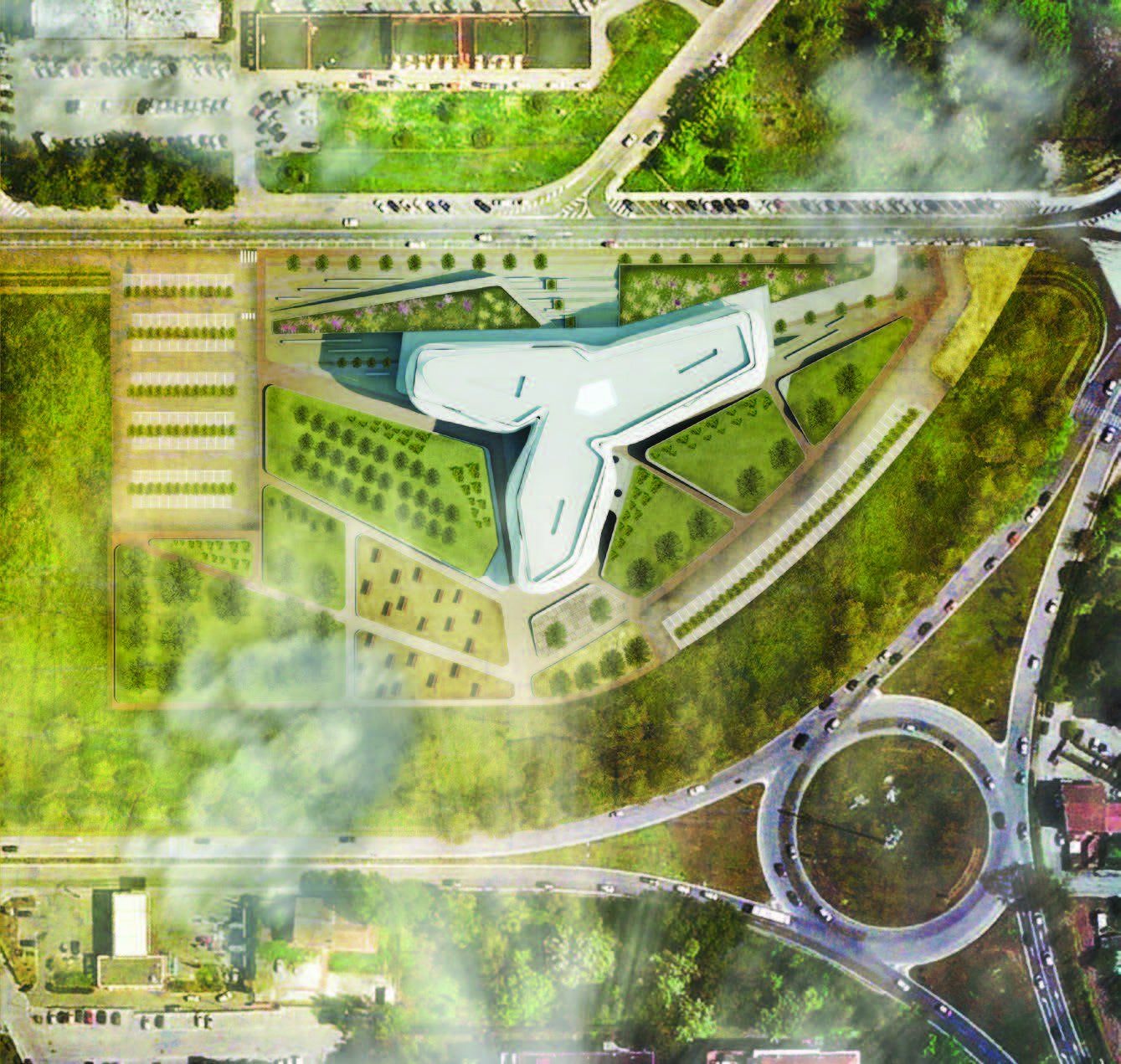
figure 5.4
Masterplan rendering of the Stella Maris Institute, by Heliopolis 21
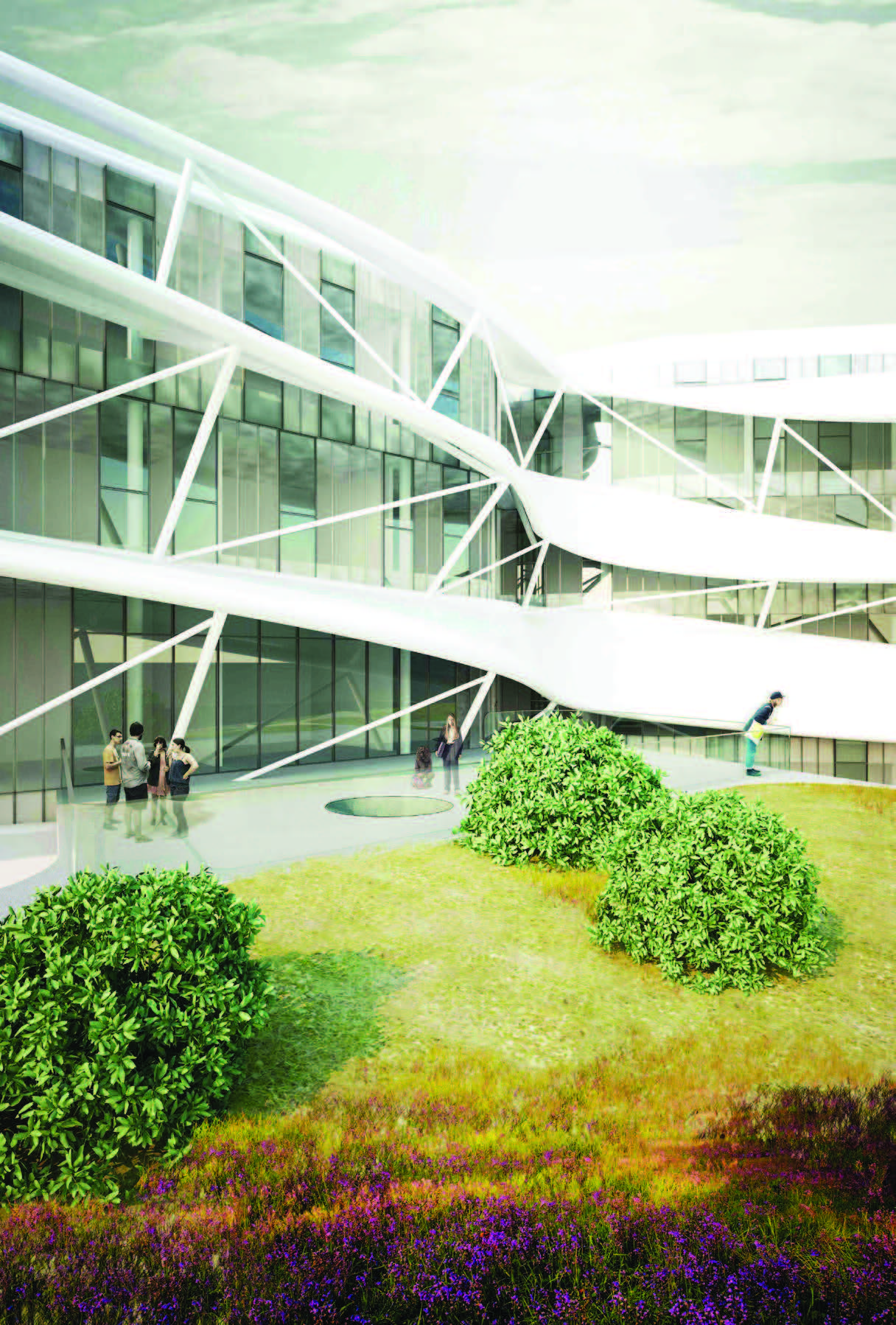
figure 5.5
Rendering of the Stella Maris Institute, by Heliopolis 21
"Clients providing a sufficient degree of latitude in the briefing, processes and assessments, and who are more supportive towards designer abilities and their professional integrity can bring forth better results for all."
PROJECT DATA
(nb. Comano Spa and The Stella Maris Institute are not included)
PROJECT DESCRIPTION
COMPETITION DESCRIPTION
COMPETITION FACTS
ASSESSMENT & SELECTION
FURTHER INFORMATION
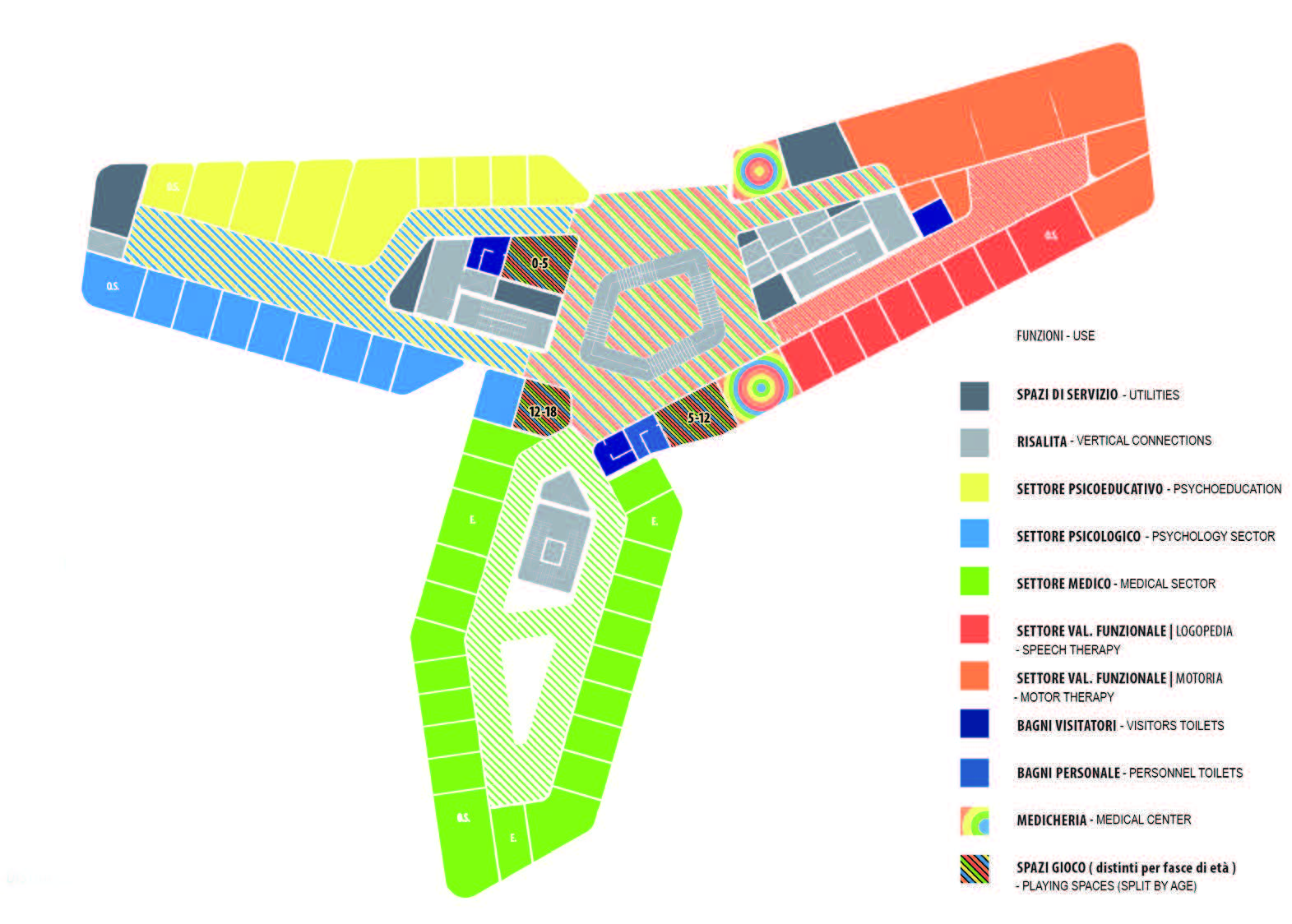
figure 5.6
1st floor plan of the Stella Maris Institute, by Heliopolis 21
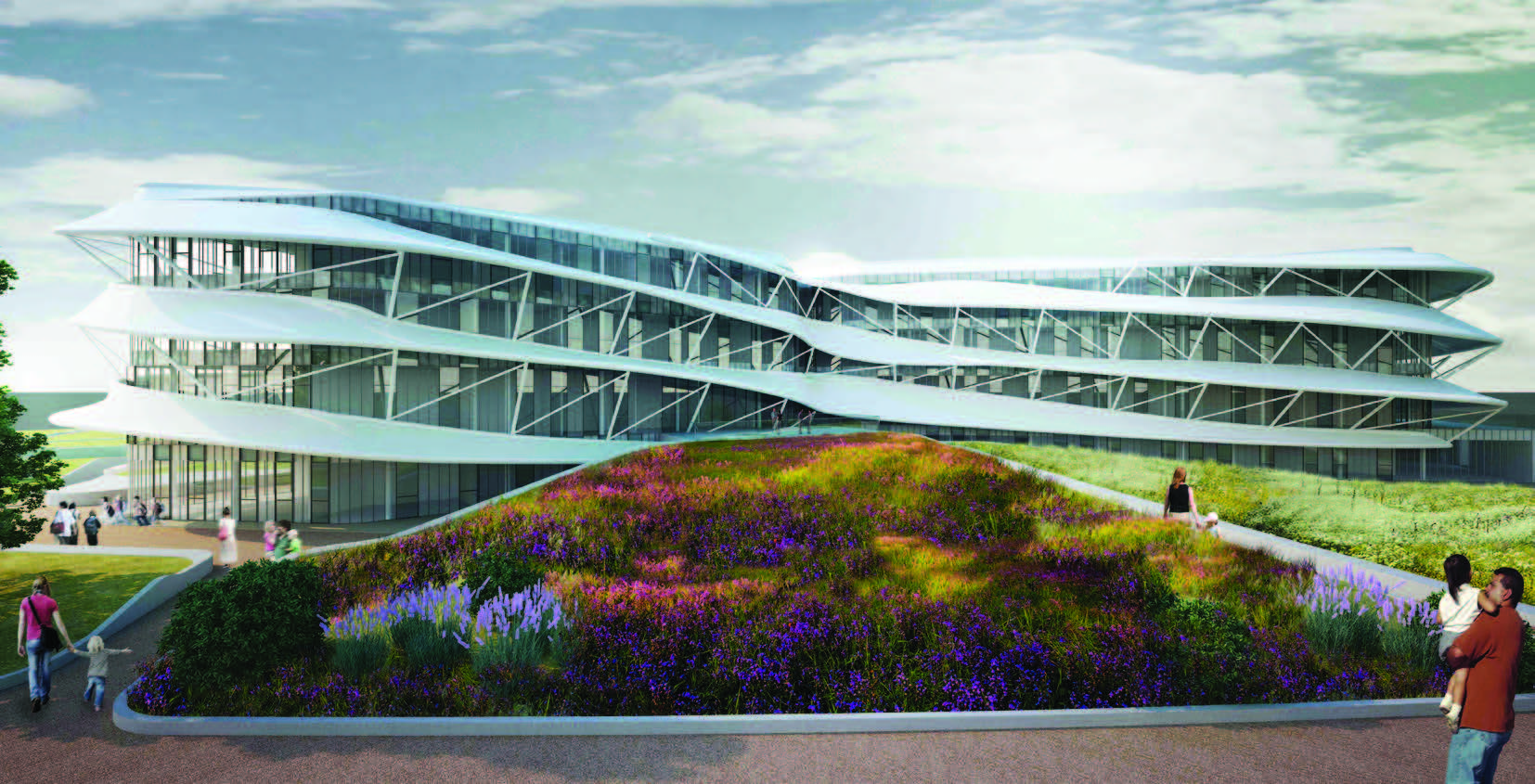
figure 5.7
Rendering of the Stella Maris Institute, by Heliopolis 21
12 июля 2023, 21:44
0 комментариев
|
Партнёры
|
||||||||||||

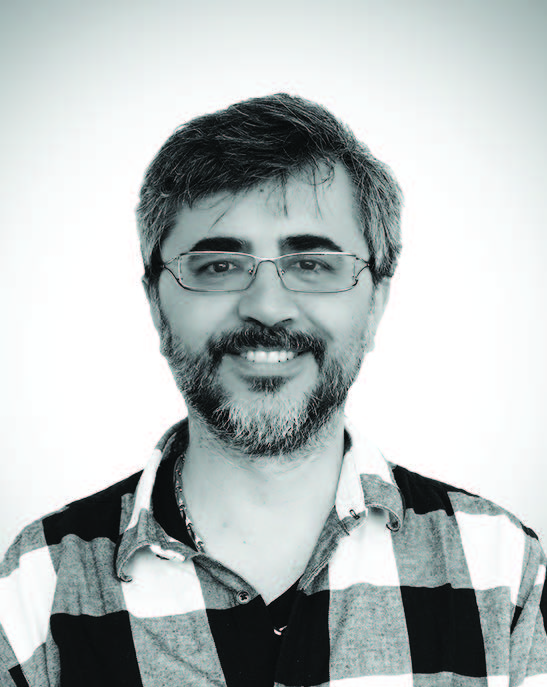





Комментарии
Добавить комментарий